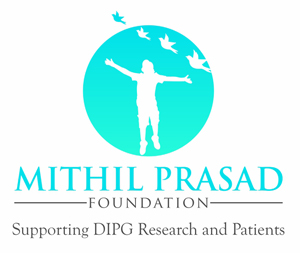DIPG: A definition and brief history

Diffuse intrinsic pontine glioma (DIPG) is a specific subtype of pediatric central nervous system (CNS) tumor that is very distinct from other CNS tumors. The CNS includes the brain and the spinal cord so, despite these tumors most frequently being referred to as “brain” tumors, I will use the term CNS to avoid excluding children with spinal cord tumors. There are over 4,000 pediatric CNS tumors a year in the US, making it the most common type of tumor. However, that’s a complicated statistic because there are many types and subtypes of CNS tumors. The most common type of pediatric CNS tumors is glioma, which the World Health Organization grades I-IV. The most common subtype of glioma is pilocytic astrocytoma which is WHO grade I and has a very high survival rate, sometimes with surgery alone because it maintains distinct borders separating it from normal brain and often occur in surgically-accessible areas. Unfortunately, on the other end of the spectrum, DIPG has a WHO grade of IV and is a fatal disease.
Presumably, DIPG has been around for all of human history but it was first described in the English medical literature in the 1920’s when a patient with classic DIPG symptoms (in-turned eye, weakness on one side) was diagnosed with a DIPG by a physical exam alone because there was no neuro-imaging (meaning CT scan or MRI) at that time. The patient sadly died within a few months, which is the natural history of DIPG without any treatment. Through the 1930’s to 50’s, radiation became more common in the treatment of cancer and ultimately it was found to be beneficial against many CNS tumors. Multiple small doses were found to be superior to very large doses, which is why DIPG is most commonly treated with 30 sessions (or “fractions”) of radiation. Radiation extends the average survival for DIPG from a few months to approximately 11 months. Hundreds of chemotherapy regimens have been tried to improve survival or offer a cure, but unfortunately even extremely aggressive treatments like bone marrow transplant-level doses of intensive chemotherapies did not offer a cure. Some doctors and researchers believe there are some conventional chemotherapies that can modestly improve survival, but they do not benefit every patient and do not cure DIPG.
While neurosurgery has become very sophisticated, DIPG is not able to be surgically removed because of its location and that it grows diffusely mixing with healthy brain tissue in the pons, which connects the brain and spine. Removing the entire pons is fatal and even taking a small chunk of DIPG is almost always impossible. For a while biopsies were performed, getting very small amounts of tissue, but they fell out of favor as they did not change the standard of care and the diagnosis can often be made by MRI because the tumor looks so distinctive (taking up the majority of the pons) and presents with such distinctive symptoms (quick development of eye in-turning, weakness on one side, loss of balance). Still, some major US pediatric hospitals do not perform biopsies, but many do, though even small biopsies have serious risks that should be discussed with a neuro-oncologist and neurosurgeon who are familiar with the procedure.
Because we have maximized the benefit of radiation, have found little benefit to even high-dose chemotherapies, and neurosurgery is impossible, we have formed large national and international working groups to determine the next phases in DIPG clinical trials, including CED (injection of treatments directly into the pons), immunotherapies, and new “targeted” drugs. Hopefully these scientific and clinical collaborative efforts will be the push we need to finally make progress against this disease.
By Dr. Nicholas Vitanza - Pediatric neuro-oncologist at Seattle Children's Hospital. Research scientist at Fred Hutchinson Cancer Research Center
